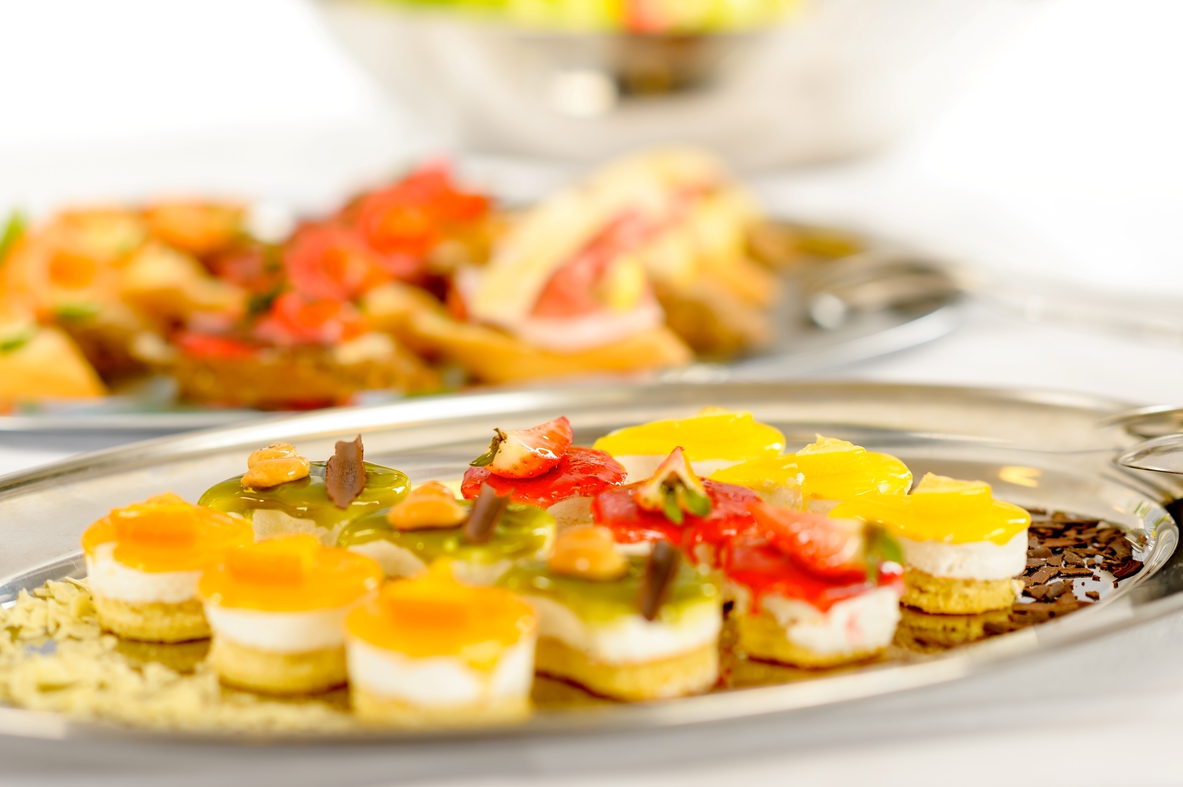When I opened my first restaurant I didn’t want it to exactly feel like a ma and pa place—even though it basically was. This was in the 1970s, when restaurant chains were more admired than disdained like they sometimes are today. Chain restaurants had special printed paper supplies, fancy logos and custom menu boards behind the counter. Independent restaurants often used generic foam cups and plastic lettered signs given to them by Coke or Pepsi. As soon as we opened I found a place to print our french fry bags and K-wax with our specially designed logo. I did everything we could to look like I owned more than one restaurant, even though of course I didn’t.
 As I moved deeper into the catering business, I did the same thing. I found a place in Tennessee to special print the small cake boxes we used for box lunches. I printed our logo and contact info on our napkins so every buffet was a walking advertisement. I even found a place that would print plastic beer cups. All of this made us look bigger than we were.
As I moved deeper into the catering business, I did the same thing. I found a place in Tennessee to special print the small cake boxes we used for box lunches. I printed our logo and contact info on our napkins so every buffet was a walking advertisement. I even found a place that would print plastic beer cups. All of this made us look bigger than we were.
Next we repainted and lettered our trucks. All of our employees wore branded t-shirts and hats, and we even ordered specially sized disposable boxes to transport our box lunches. Our logo was on everything we sent to clients and we made sure our email tag lines were up-to-date and slick.
Of course this cost money, but I’m sure that these actions more than paid for themselves. Any first-time customers were quickly put at ease by the way our food looked, the way our staff appeared, and the general way we presented our business to them.
When printed menus were more popular than online versions, we ensured ours were professionally set up and printed. When everything moved online, we quickly made the transition and had a quality vendor design and develop our site.
While these thoughts may seem obvious, not everyone practices them. There are a lot of excuses that can be employed, from “I barely have time to get the food out” to “there’s no way I can find the money to do that kind of branding.” If you use the excuses as excuses, however, you will soon see your competitors pass you by.
I encourage you to take the time to also learn from people who owned other kinds of businesses. You never know what you can pick up and use for your own business. Always keep innovating!
Michael Rosman is a member of the Catersource consulting team. If you would like information about him coming to your business to address your specific needs, please email Carl Sacks at [email protected]. His book, Lessons Learned From Our Mistakes – and other war stories from the catering battlefield is available through the Catersource store.
You can visit Michael’s website at www.TheCorporateCaterer.com email [email protected].



